Networked improvement communities in education Roy Pea. 1.* - unedited transcript - I am from SRI, and am going to talk about of a number of network improvement communities that we are engaged in at SRI.
Our mission is learning and teaching through innovation and inquiry in computing and communications.
How we do that is through two basic activities, advanced theory and research on learning and teaching whether it involves technology or not. Mind brain experience is an example of a topic that has just been published. We also build learning environments and put them to creative use and do systematic assessments to see if they make any significant difference. So in short we do learning science and engineering. We do a lot of work with different people in a lot of disciplines, with a lot of activities.
The key point here is that the American education system is very fragmented and decentralized. Education improvement efforts they are very isolated and incremental. So how do we leverage the knowledge "in the system" in some revolutionary way? We have found the network improvement community to be a generative idea.
We describe it as a coalition of organizations each engaged in a similar improvement process. It may be a creating better math activities or teacher development. We have a number of projects funded by the federal government such as foundations for educational companies that network associations can craft new mechanisms create for improving their isolated improvement processes. It is learning to learn, and builds value and leverages knowledge for distributed communities.
I am going to talk about scale and progress for five network improvement communities from our center, five different emphases. One is Tapped In, an on-line teacher professional development institute. A second is CILT (Center for Innovative Learning and Technology) a visual center for K-14 learning technologies across scores of institutions in the states and some overseas. The third is PALS, which are new developments of performing assessments for learning science rather than the standard multiple-choice tests. OERL, is an on-line library of education project evaluation resources, which can help make better a lot of the funding that is, provided by a lot of these agencies. Finally ESCOT is an interoperable mathematics educational component. So I will say a little about each of these. Tapped In is lead by Mark Shlager.
It is an education Community of Practice Model for Scalable, Sustainable Teacher Professional Development.
It is a web-based virtual conference center that has emerged over the last couple of years with a lot of design work by education professionals K-16 with 15 partner organizations and agencies and small groups who create on-line learning experiences with any computer at anytime. For multi-user virtual environments, synchronous and asynchronous communication, storing, and sharing of Website documents, and community-wide activities and support services. This gives you a sense of the campus map.
There has also been considerable growth word of mouth with 7,000 members in the community.
A lot of education agencies have taken to this as serving their needs. Teacher and cybarian professional organizations and web sites from parts of the country that have been feeling considerable deficiencies in face-to-face and standard teacher development activities. So what do people do in this type of environment?
They can extend to interact on-line through a real time and e-mail help desks. There are after school online discussion sessions that have a broad schedule. Free offices are available to individuals and small groups where they can have meeting and review documents. There are newsletters and calendars, meet me lists, for all of the affiliated groups. In addition, there are How to Guides and Consulting for organizations. Educators do a lot of things in here; they pull together distributive project meetings with colleagues and students. They lead discussions, they conduct and attend courses. They find experts and new colleagues, and discuss ideas in a safe and supportive environment.
PThe learning that is going on is not just about content. The learning occurs through discourse around content. Membership is diverse. You will not find this is the physical world counterpart. These teachings are communicated as members cross many agencies, programs, projects, and geographical boundaries in the virtual hallways of these places and share what they are learning. They need public and private spaces to support what they do. It's not easy.
Nuts and bolts, it is difficult to sustain these places. It's hard, costly and takes a lot of staff. TPO (teacher parent organizations) need to understand that their challenge begins where their efforts leave off. We get them in this environment after they go home and close their doors at night. Teachers need ownership of an on-line workplace that will be there after TPO courses, projects, workshops, or grants end. There needs to be sustainability. Teachers are often ready for this type of environment, but leaders are not. They see them as a costly risk and don't know how to budget them. Traditional teaching approaches don't translate well on-line. A second network improvement community led by Edys S. Quellmaiz is called PALS. The idea here an interactive resource bank for improving the standards-based science assessment.
This is funded by the National Science Foundation. A page from the site gives you an idea of the several hundred performance based assessment for science. This often makes teachers do things that they don't know how to do. That is assesses kids doing more authentic kinds of learning, like hands on kind of things. There are a number of states and different groups that develop, at their expense, new ways of assessment to do this. We provide administration procedures, places where people can be supportive in learning these new approaches. School districts are getting involved in that effort.
Lessons learned are pretty common across efforts of these kinds. There are different agendas. They need to involve the participants from the very beginning. The challenges are co-evolutionary. This issue of collecting systematic evidence of quality, usability, and impact is real important in this. We seek to do that.
The third effort, also lead by Edys S. is OERL. The challenge here is NSF funds literally hundreds of millions of dollars to projects for new curriculum, new undergraduate instruction, new use of technology, and people are not good at doing evaluations. That is a problem. So we are trying to share models of best evaluations practices and methodologies and provide examples and designs and results of evaluations. And begin to pool those resources, instruments and plans and create an improvement infrastructure around that evaluation of work. This has been a vibrant and lively activity in these various groups. Exemplary content may be hard to find. In terms of bringing standards together, people debate around what constitutes a good evaluation and they find there are a lot of different criteria to consider. They spend time on the web so there has been a lot of concentration on navigation. There's a lot of focus on customization of user audiences. School superintendents and people who are doing assessments themselves don't necessarily want the same interest.
In this theme of pooling our efforts we need to support and provide content for improvement by keeping people enthusiastic and feel that they are getting something out of the community and participating to keep them there.
This is another network improvement network that is called the Center for Innovative Learning Technologies. (CILT) There is huge expertise out there that is very fragmented. It is about how to do research informed learning technology research and development with kids and hard subjects (math and science). We have done it for twenty years and trained lots of people, yet we continue to be frustrated about the bar of quality of work in the field that we know is not as high as we know it could be. The notion was to create a distributed center and act in a lot of activities to try to raise the bar of the quality of work going on in k-14 learning technology. We spent time defining high priority breakthrough themes where we saw the work and advances going. But also break though opportunities with willingness and interest in for education reform and other problems we find facing schools.
We define visualization and modeling, ubiquitous computing, community tools, and investments for learning as problems of this kind. We then bring together people from research and industry and policy makers to these workshops. We have tuned a process where we share of new knowledge and brokering desires. People tell us what they have learned and what they need to. There is a lot of work done over the course of these days by which partnership groups tell us about the methodologies, technologies, and funding then need for their projects. So we support the leadership groups that emerge in these workshops with funding and other efforts. We are trying to support a self-knowledge network where we collect information about people, places, projects, the courses people teach and collaborations they do that can be resourceful for the community as a whole.
It is a multilevel network improvement community. We work to improve our own processes across this different organization. We Inage in different annual meetings with the research community are the high priority areas. We try to understand how to weave in the very different priorities of industry, policy, and makers around learning and technology. They are concerned with studying the impact of things, also teacher practitioners themselves.
It takes time to write papers about NICS but it also to run them. It involves so much coordination a lot of things that get reviewed as overhead by partners become coordinate functions. Keeping tack of people, connections, and who influences whom, and who needs what. As Doug learned at SRI with the network information center, become core to a NIC. Work with stakeholders early. We found he concrete focus is collaboration is critical. How collaboration raises the bar of what we can do. We can all do better. We use the mechanism of workshops. Some of my favorite stories are single researchers from obscure universities suddenly collaborating with leading researchers and having access to supercomputing and things like that. One of the things we are now doing running... is sponsored by Paul and Puman and Handspring others.... is we are running a hand held learning applications competition. We got them to underwrite. Our community set standards of what we thought was possible high yield leaning applications. On March 6 there will be an update of how that is going at the Exploratorium. Lots of challenges.
Contracts. This nearly killed us. Universities and other institutions like to own and not share. Our conditions for funding on these small chunks of money that we give out are that everything that gets produced is in the public domain. We want to amplify the results of what goes on by us. Doesn't mean that prior work gets compromised. It has been challenging. Under traditional models the process of collaboration is rarely funded. Time and attention. NICS bring together the best and the brightest. All of these people that run five, ten, fifteen million dollar centers. This is a new thing. IT is stressful. On design... for example kids studying water quality with hand held computers and simulations; we try to bring tighter the best understanding of all of together.....the methodologies, tools, and assignments. We find designing these things with collaborations from the start really make a big difference.
The last on is on ESCOT this is improving the quality, interpretability and use of JAVA software components for teaching middle school mathematics. Lots of redundant efforts. Companies produce their own spreadsheets simulations own right way components creating their own application islands. What we do is create a variety of conditions for setting up a test bed for evolving knowledge network and interoperable software library for continuous improvements. Lots of developing components, a few dozen for developing the web standards.
The last point is about MetaNICS. Even though we have a lot of NICS running out of our center, we don't have a lot of cross NIC activity. It's significant that we don't and there has been effort here. Each NICs has different mechanisms and solutions for doing its improvements. We find it hard to do the integration.
---
Above space serves to put hyperlinked
targets at the top of the window
|

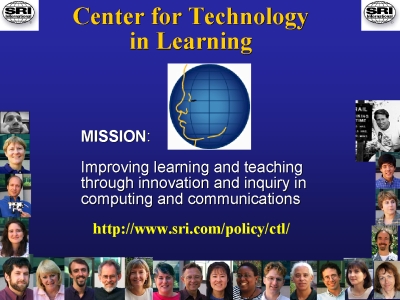 Fig. 1
Fig. 1 Fig. 2
Fig. 2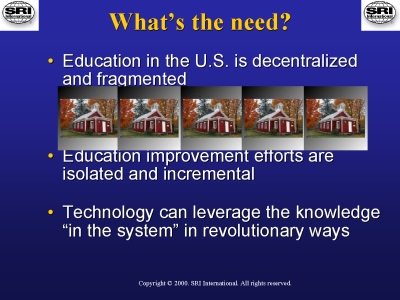 Fig. 3
Fig. 3 Fig. 4
Fig. 4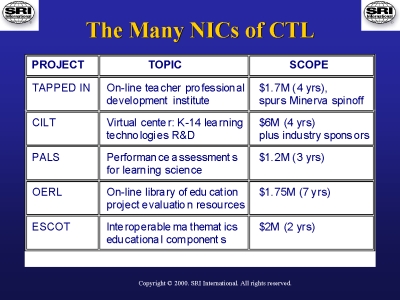 Fig. 5
Fig. 5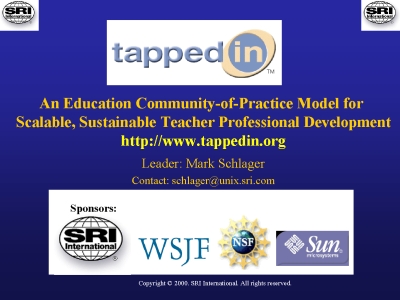 Fig. 6
Fig. 6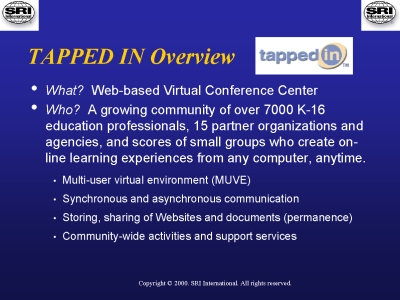 Fig. 7
Fig. 7 Fig. 8
Fig. 8
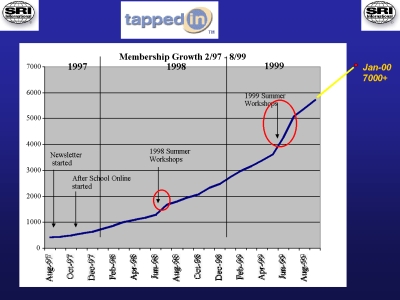 Fig. 9
Fig. 9 Fig. 10
Fig. 10 Fig. 11
Fig. 11 Fig. 12
Fig. 12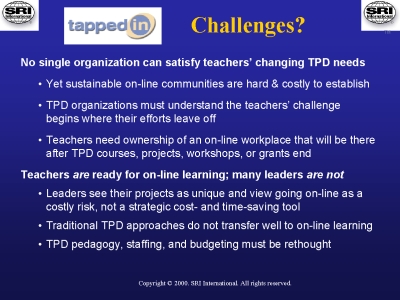 Fig. 13
Fig. 13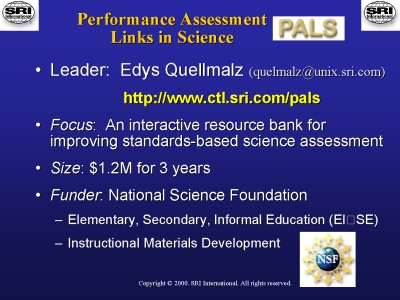 Fig. 14
Fig. 14 Fig.
15
Fig.
15
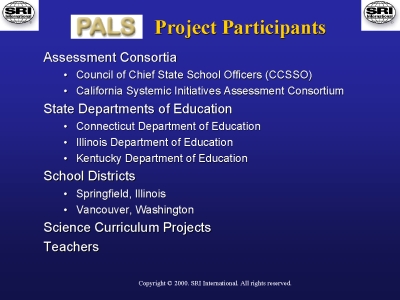 Fig.
16
Fig.
16
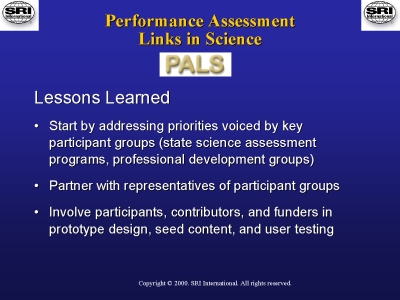 Fig.
17
Fig.
17
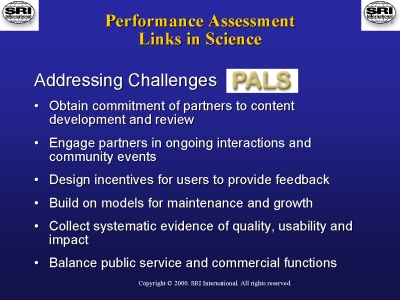 Fig.
18
Fig.
18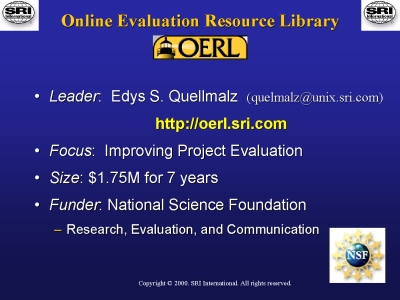 Fig.
19
Fig.
19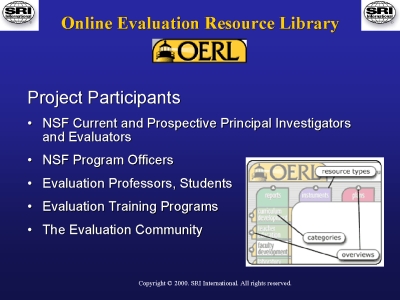 Fig.
20
Fig.
20
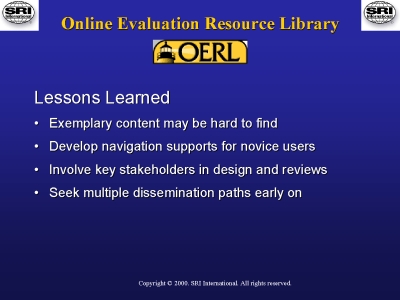 Fig.
21
Fig.
21
 Fig.
22
Fig.
22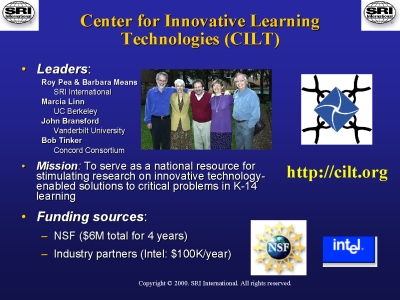 Fig.
23
Fig.
23 Fig.
24
Fig.
24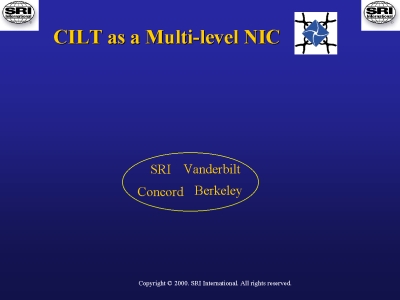 Fig.
25
Fig.
25
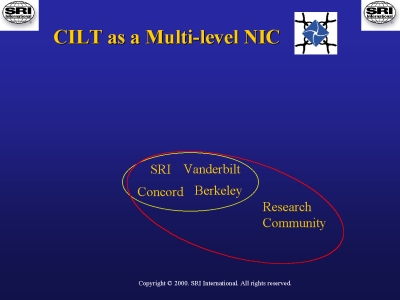 Fig.
26
Fig.
26
 Fig.
27
Fig.
27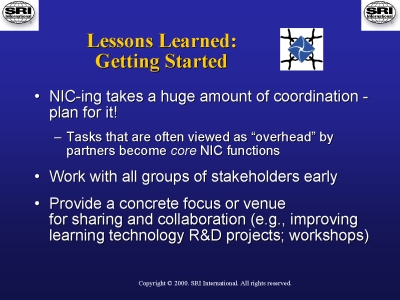 Fig.
28
Fig.
28 Fig.
29
Fig.
29
 Fig.
30
Fig.
30 Fig.
31
Fig.
31
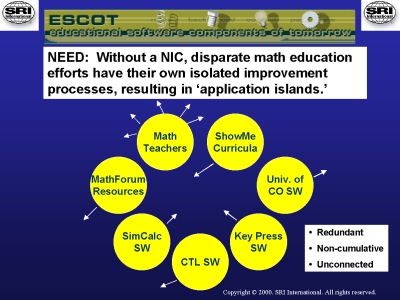 Fig.
32
Fig.
32
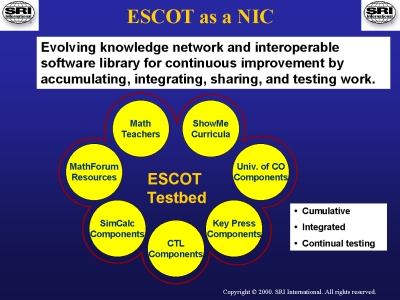 Fig.
33
Fig.
33
 Fig.
34
Fig.
34
 Fig.
35
Fig.
35
 F
ig. 36
F
ig. 36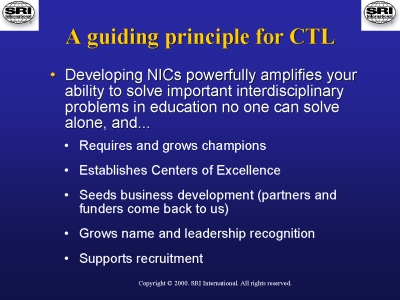 Fig.
37
Fig.
37
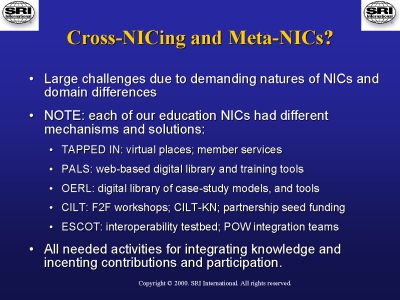 Fig.
38
Fig.
38